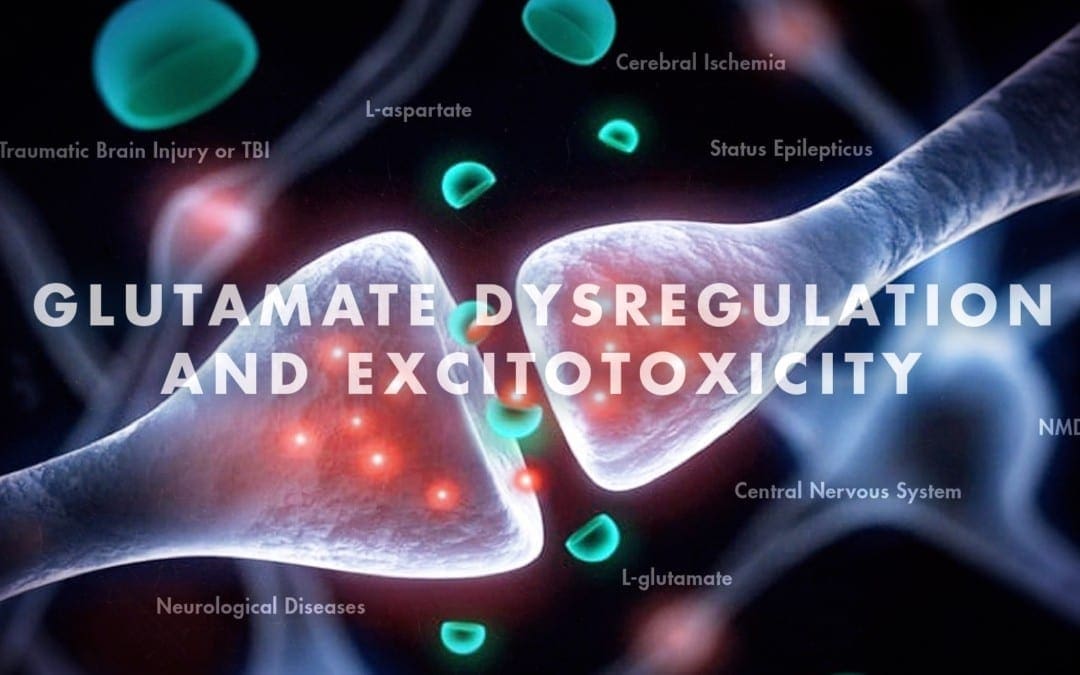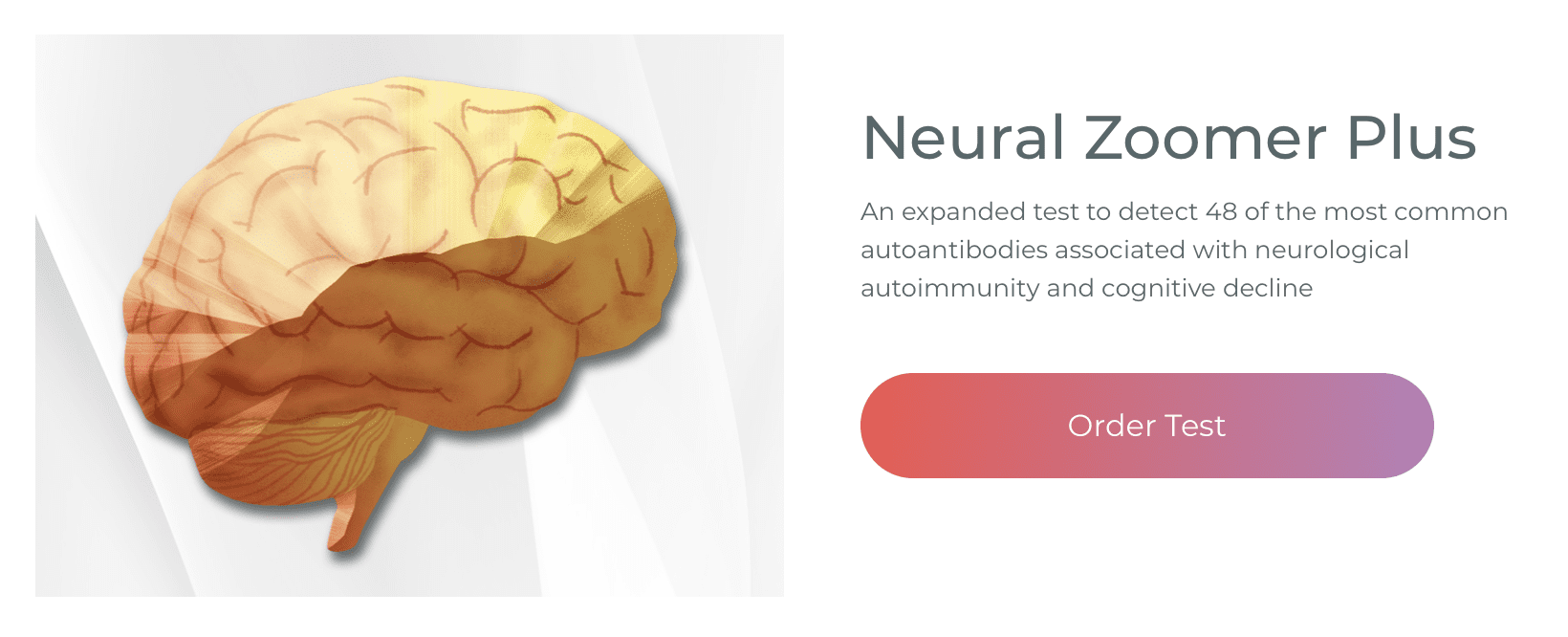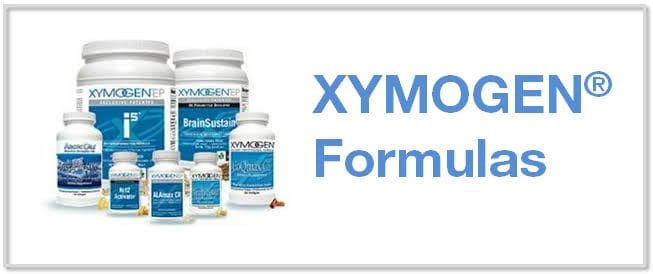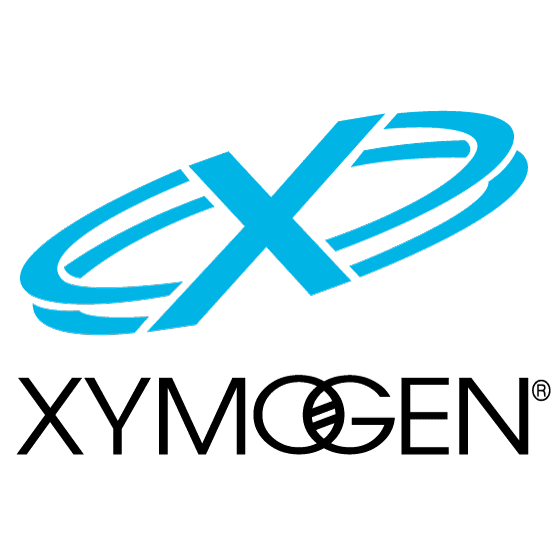
Functional Neurology: Glutamate Dysregulation and Excitotoxicity
Excitotoxicity is characterized as an acute insult which causes nerve cell death due to the excessive activation of iGluRs. Acute excitotoxicity plays a fundamental role in a variety of central nervous system (CNS) health issues, including cerebral ischemia, TBI, and status epilepticus. The mechanisms for acute excitotoxicity are different for every health issue. �
With brain ischemia, L-glutamate-associated and L-aspartate-associated excitotoxicity happen within minutes due to the growth in extracellular cerebral L-glutamate as well as L-aspartate. Because these are also energy-dependent, the abrupt loss of energy due to the shut down of blood flow can ultimately breakdown the neuronal and astroglial membrane. In neurons, membrane depolarization contributes to vesicular discharge. Additionally, energy degradation may even cause a change in their action, therefore, causing L-glutamate and L-aspartate to activate and affect ionic homeostasis which can interrupt EAAT action. The activation of L-glutamate/L-aspartate contributes to excitotoxicity through the over-activation of iGluRs of the NMDA type as demonstrated by the efficiency of NMDA antagonists in animal models of transient cerebral ischemia. �
In TBI, the mechanical tissue damage and the disruption of the blood-brain barrier can trigger acute secondary neurodegeneration, which, together with neuroinflammation and oxidative stress, is associated with L-glutamate activation from intracellular compartments and, therefore, by acute excitotoxicity. Moveover, acute application of the NMDA antagonist MK801 following TBI ameliorates neuronal loss and long-term behavioral abnormalities, among others. �
In status epilepticus, continuing the synchronized activity of excitatory neuronal networks as well as the continuous breakdown of restricting mechanisms is the main source of L-glutamate and L-aspartate activation. As the severity of synchronous activity depends upon the involvement of nerve cells into a neuronal system as well as the capability of a neural cell to withstand excess glutamate mainly depends on the expression pattern of iGluRs, a somewhat restricted and maturation-associated degeneration of neuronal populations which is ultimately caused by prolonged epileptic seizures. The significance of excitotoxicity in status epilepticus is shown as NMDA antagonists, such as ketamine, decrease adrenal loss. �
Excitotoxicity in Neurological Diseases
Because EAATs were discovered to be down-regulated in a variety of central nervous system (CNS) health issues and L-glutamate, as well as L-aspartate, clearance can ultimately affect the excitotoxicity of neurological diseases, many healthcare professionals have decided to determine substances which cause EAAT2, or the main EAAT in the brain and most commonly shown to be downregulated. This has demonstrated substances which shows astrocytic EAAT2 expression both in vitro and in vivo research studies. Several of these have also demonstrated protective properties in animal models of neurological diseases. Cef is one of the most evaluated compounds and it has been analyzed in AD, HD, and ALS models with positive outcomes. However, none of the substances has been extensively researched for its capability to interact with other neuroprotective pathways. Cef has also been demonstrated to promote EAAT2 expression but also to trigger the transcription factor Nrf2, which results in the transcription of a wide array of genes involved in cytoprotection and antioxidant protection. Because oxidative stress is believed to play an essential role in many, if not all, neurological diseases, this pathway may account for the neuroprotection caused by Cef. Furthermore, xCT, which can be one of the downstream targets of Nrf2, has been demonstrated to be upregulated by Cef in vitro and in vivo. Another in vitro EAAT2-promoting substance, MS-153, efficiently protected against secondary neurodegeneration after traumatic brain injury as well as through mechanisms other than EAAT2 upregulation. Evidence of concept experiments which demonstrate the increased stimulation through iGluRs in neurodegenerative diseases needs manipulations of their neurotransmitter physiology. �
Glud1 Tg mice demonstrate a model of excitotoxicity associated with enhanced synaptic L-glutamate activation with restricted neuronal loss. However, this animal model of glutamatergic neurotransmission has not yet been utilized to analyze if Glud1 over-expression aggravates the phenotype of mouse models in neurological diseases. Another version involves the EAAT2-deficient mouse. Homozygous EAAT2 knock-out mice have health issues associated with premature death because of epilepsy as well as hippocampal and focal cortical atrophy. Heterozygous EAAT2 knock-out mice, however, develop normally and show only mild behavioral abnormalities. This mouse model of moderate glutamate hyperfunction has been utilized in a collection of evidence of principle research studies which demonstrated the fundamental role of glutamate. ALS mice, which have both the G93A mSOD1 mutation and a decreased quantity of EAAT2 (SOD1(G93A)/EAAT2�), revealed an increase in the speed of motor decline accompanied by earlier motor neuron loss when compared with single mutant G93A mSOD1 Tg mice. A decrease in survival was also demonstrated in these mutant mice. When crossed with transgenic mice expressing mutations of the human amyloid-? protein precursor and presenilin-1 (A?PPswe/PS1?E9), partial loss of EAAT2 unmasked spatial memory deficits in 6-month-old mice expressing A?PPswe/PS1?E9. These mice demonstrated an increase in the ratio of detergent-insoluble A?42/A?40 demonstrating that shortages in glutamate transporter function ultimately cause premature pathogenic processes associated with AD. By comparison, the phenotype of the R6/2 HD mouse model wasn’t changed in mice which had only one EAAT2 allele. Further research studies are still necessary for further evidence. �
As a complement to these research studies, transgenic mice which over-express EAAT2 in astrocytes through the GFAP promoter has also been developed. EAAT2/G93A mSOD1 double Tg mice demonstrated moderate amelioration of their ALS-like phenotype with a statistically significant (14 times ) delay in grip power decrease and loss of motor neurons as well as a decrease in other occasions, such as caspase-3 activation and SOD1, although not at the beginning of paralysis, weight loss or an extended life span when compared with monotransgenic G93A mSOD1 littermates. Exactly the same EAAT2 transgenic mouse model was utilized to evaluate the effect of improved astrocytic L-glutamate and L-aspartate uptake by cross-breeding with an animal model of AD, A?PPswe/Ind mice. Increased EAAT2 protein levels considerably increased and improved overall cognitive functioning, restored synaptic ethics, and decreased amyloid plaques in those AD mice. �
In mice in which genetically engineered regulation and management of xCT causes a lack in the glutamate/cystine antiporter system x?c, the obvious decrease of extrasynaptic L-glutamate is associated with the tremendous resistance of dopaminergic neurons against 6-hydroxydopamine-induced neurodegeneration, perhaps as a consequence of reduced excitotoxicity. However, microglial activation has also been demonstrated to be modulated by system x?c deficiencies leading to a more neuroprotective phenotype which offers an explanation for the protective effect of xCT deletion in this circumstance. �
Therefore, genetic variations encourage the role of chronic excitotoxicity in neurodegenerative diseases, particularly AD and ALS. These models all represent life-long changes in glutamatergic neurotransmission. These models can’t determine if the utilization of drugs and/or medications can directly affect glutamate levels throughout the neurodegenerative process and/or be protective. Both evaluation and analysis of EAAT2-inducing medicine for the progression of inducible mouse models and their interaction with other signaling pathways is still warranted by researchers and healthcare professionals. �

In many research studies, evidence and outcome measures have demonstrated that glutamate dysregulation and excitotoxicity in many neurological diseases, including AD, HD, and ALS, ultimately lead to neurodegeneration and a variery of symptoms associated with the health issues. The purpose of the following article is to discuss and demonstrate the role that glutamate dysregulation and excitotoxicity plays on neurodegenerative diseases. The mechanisms for excitotoxicity are different for every health issue. – Dr. Alex Jimenez D.C., C.C.S.T. Insight – Dr. Alex Jimenez D.C., C.C.S.T. Insight
Metabolic Assessment Form
The following Metabolic Assessment Form can be filled out and presented to Dr. Alex Jimenez. Symptom groups listed on this form are not intended to be utilized as a diagnosis of any type of disease, condition, or any other type of health issue. �
Excitotoxicity is characterized as an acute insult which causes cell death due to the excess activation of iGluRs. Excitotoxicity plays a fundamental role in a variety of central nervous system (CNS) health issues, including cerebral ischemia, TBI, and status epilepticus. The mechanisms for acute excitotoxicity are different for every health issue. The scope of our information is limited to chiropractic, musculoskeletal and nervous health issues as well as functional medicine articles, topics, and discussions. We use functional health protocols to treat injuries or chronic disorders of the musculoskeletal system. To further discuss the subject matter above, please feel free to ask Dr. Alex Jimenez or contact us at 915-850-0900 . �
Curated by Dr. Alex Jimenez �
References �
- Lewerenz, Jan, and Pamela Maher. �Chronic Glutamate Toxicity in Neurodegenerative Diseases-What Is the Evidence?� Frontiers in Neuroscience, Frontiers Media S.A., 16 Dec. 2015, www.ncbi.nlm.nih.gov/pmc/articles/PMC4679930/.
Additional Topic Discussion: Chronic Pain
Sudden pain is a natural response of the nervous system which helps to demonstrate possible injury. By way of instance, pain signals travel from an injured region through the nerves and spinal cord to the brain. Pain is generally less severe as the injury heals, however, chronic pain is different than the average type of pain. With chronic pain, the human body will continue sending pain signals to the brain, regardless if the injury has healed. Chronic pain can last for several weeks to even several years. Chronic pain can tremendously affect a patient’s mobility and it can reduce flexibility, strength, and endurance.
Neural Zoomer Plus for Neurological Disease
Dr. Alex Jimenez utilizes a series of tests to help evaluate neurological diseases. The Neural ZoomerTM Plus is an array of neurological autoantibodies which offers specific antibody-to-antigen recognition. The Vibrant Neural ZoomerTM Plus is designed to assess an individual�s reactivity to 48 neurological antigens with connections to a variety of neurologically related diseases. The Vibrant Neural ZoomerTM Plus aims to reduce neurological conditions by empowering patients and physicians with a vital resource for early risk detection and an enhanced focus on personalized primary prevention. �
Formulas for Methylation Support
XYMOGEN�s Exclusive Professional Formulas are available through select licensed health care professionals. The internet sale and discounting of XYMOGEN formulas are strictly prohibited.
Proudly,�Dr. Alexander Jimenez makes XYMOGEN formulas available only to patients under our care.
Please call our office in order for us to assign a doctor consultation for immediate access.
If you are a patient of Injury Medical & Chiropractic�Clinic, you may inquire about XYMOGEN by calling 915-850-0900.
For your convenience and review of the XYMOGEN products please review the following link.*XYMOGEN-Catalog-Download �
* All of the above XYMOGEN policies remain strictly in force.
�










